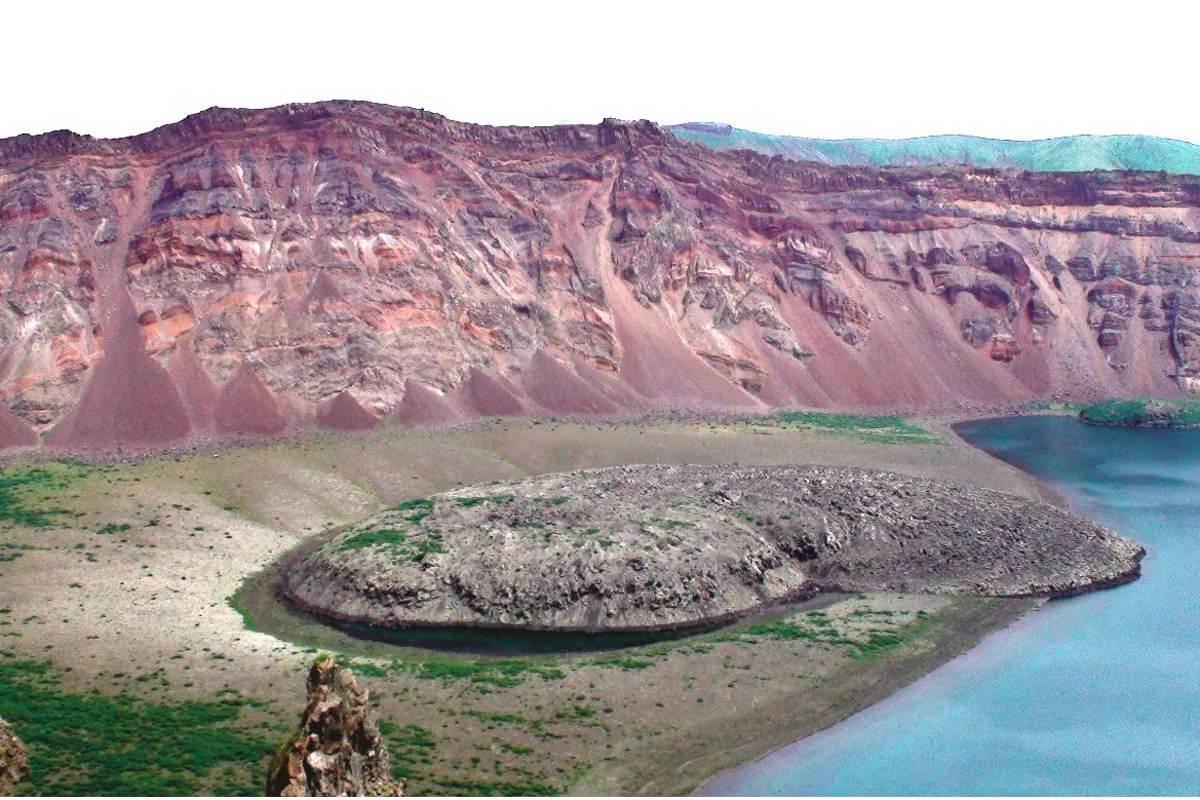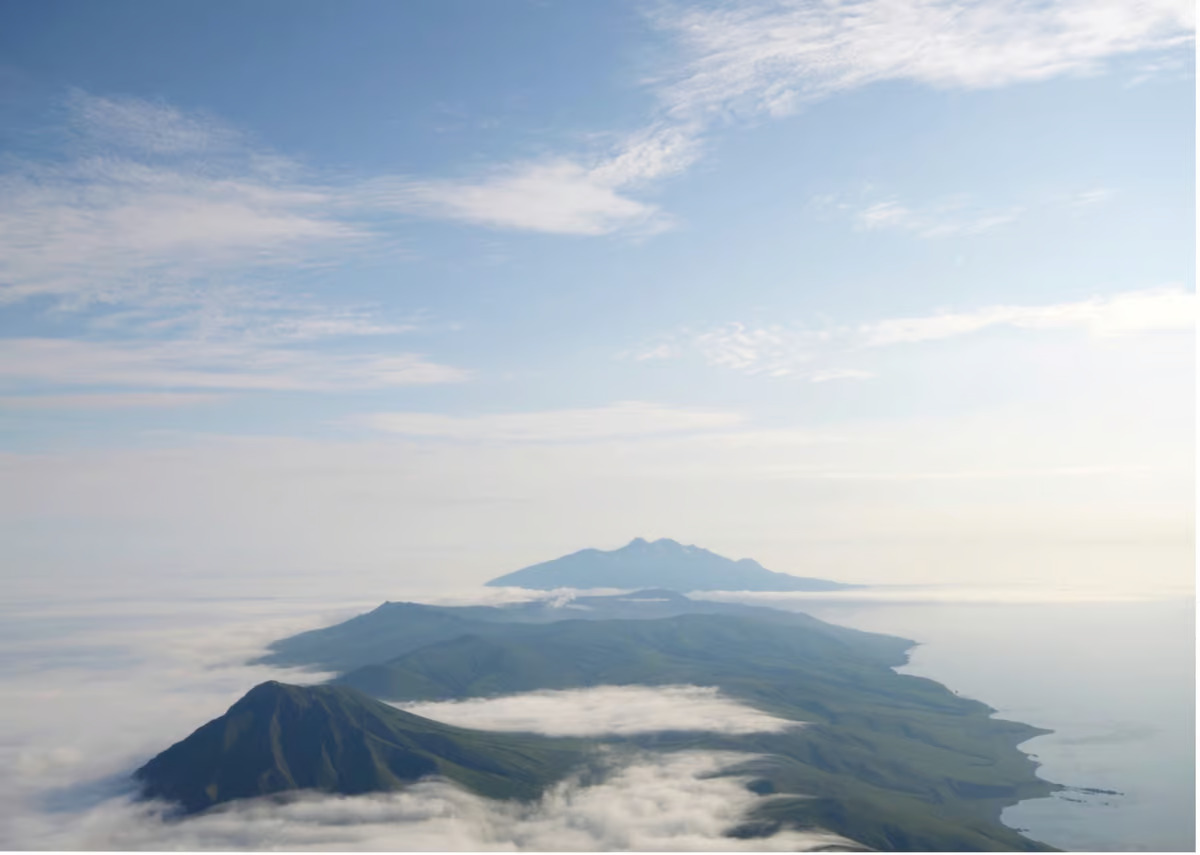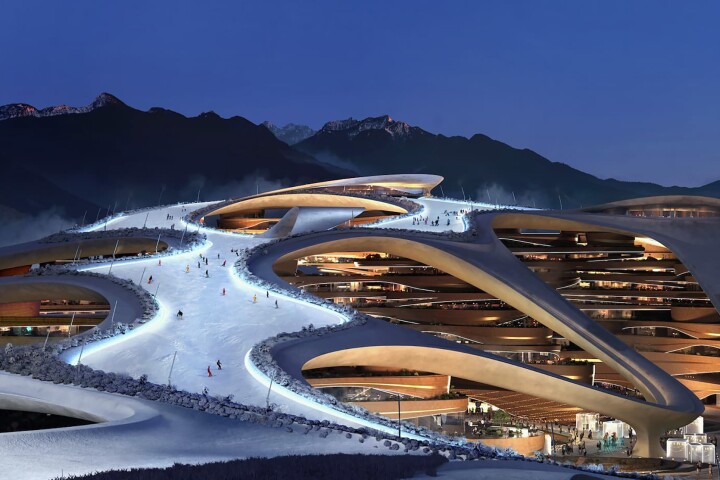 The caldera of Zavaritskii volcano. Oleg Dirksen/University of St. Andrews –
The caldera of Zavaritskii volcano. Oleg Dirksen/University of St. Andrews –
The year 1831 was a very nasty one in terms of weather. Across the globe, temperatures dropped by an average of 1 °C (1.8 °F). The British Isles were inundated with rain to the point where it was one of the wettest years on record for that century as the countryside flooded. Snow storms buffeted the Northeastern United States, and India and Japan suffered from severe famines as crops failed.
Even the composer Felix Mendelssohn took time off from scribbling his “String Quartet No. 2 in A Minor” to note that, during a trip through the Alps, he was treated to “desolate weather, it has rained again all night and all morning, it is as cold as in winter, there is already deep snow on the nearest hills…”
It wasn’t the worst year without a Summer on record, but it was pretty nasty as such things go. In the years since, scientific consensus has favored the cause of the disaster to be a volcanic eruption. This explosion, we now know, was equivalent to up to 25,000 Hiroshima atomic bombs hurling massive amounts of sulfur dioxide, amounting to 13 million tons, into the upper atmosphere, where it formed sulfate aerosols. These acted as tiny mirrors that reflected the sunlight back into space, cooling the planet significantly.

The tricky bit has been figuring out which volcano went bang and caused all that aggravation.
Now, a team led by Dr. Will Hutchison from the School of Earth and Environmental Science at the University of St. Andrews seems to have the answer. Looking at ice cores dating back to 1831, the scientists used new chemical analysis techniques to find the ‘fingerprints’ to match the microscopic ash particles one-tenth the diameter of a human hair spewed into the air.
What the researchers found was that the chemical composition of the ice core ash matched nicely with the Zavaritskii volcano on the remote, uninhabited island of Simushir, which is part of the Kuril Islands. That’s already an odd place, since it’s been disputed territory between Russia and Japan ever since the Soviet Army occupied it at the end of the Second World War, and it was once the site of a secret nuclear submarine base during the Cold War.
“We analyzed the chemistry of the ice at a very high temporal resolution,” said Hutchison. “This allowed us to pinpoint the precise timing of the eruption to Spring-Summer 1831, confirm that it was highly explosive, and then extract the tiny shards of ash. Finding the match took a long time and required extensive collaboration with colleagues from Japan and Russia, who sent us samples collected from these remote volcanoes decades ago.
“The moment in the lab when we analyzed the two ashes together, one from the volcano and one from the ice core, was a genuine eureka moment. I couldn’t believe the numbers were identical. After this, I spent a lot of time delving into the age and size of the eruption in Kuril records to truly convince myself that the match was real.”
Aside from its historical significance, the 1831 incident has importance in modern times because such volcanic disruptions are not uncommon, with the last weather-disrupting eruption coming in 1991 when Mount Pinatubo blew its stack in the Philippines and dropped global temperatures by half a degree Celsius.
At the very least, it may give those keen on trying to artificially engineer the Earth’s climate some pause in the face of natural forces far greater than anything humans can produce that would almost certainly disrupt such schemes in, shall we say, unintended ways.
Source: University of St. Andrews
–
























